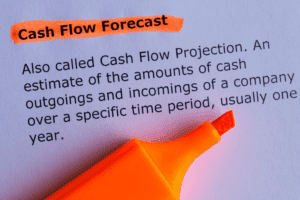1 2: Opportunity Cost

For example, if you were to invest the entire amount in a safe, one-year certificate of deposit at 5%, you’d have $1,050 to play with next year at this time. While opportunity costs can’t be predicted with total certainty, taking them into consideration can lead to better decision making. Having examples can help to achieve a clearer understanding of the concept of opportunity costs. “This reduces the investor’s decisions from looking at every opportunity to a manageable question of ‘How much of each asset class should I hold?
- In principle there exists a critical price at which you’re indifferent to “doing the time” or “paying the fine.” That price is the monetized or dollar cost of the jail sentence.
- For example, if you were to invest the entire amount in a safe, one-year certificate of deposit at 5%, you’d have $1,050 to play with next year at this time.
- Again, such a valuation approach converts a bundle of disparate attributes into a monetary value.
- A former Wall Street trader, he is the author of the books CNBC’s Creating Wealth and The Career Survival Guide.
- But once you understand opportunity cost is a factor you should weigh, the amount of opportunities to consider may seem intimidating.
It’s obvious that decisions around what to invest in are inherently informed by opportunity cost. But once you understand opportunity cost is a factor you should weigh, the amount of opportunities to consider may seem intimidating. You don’t want to choose the wrong investment option and incur the wrong opportunity cost, after all. Johnson points to historical data on stocks versus bonds to illustrate the missed financial opportunities.
Module 11: Relevant Revenues and Costs
Watch this video to see some more examples and a deeper explanation of opportunity cost. If the business goes with the securities option, its investment would theoretically gain $2,000 in the first year, $2,200 in the second, and $2,420 in the third. “Opportunity costs means “What else could I have done with my money?
When weighing two or more courses of action, the opportunity cost refers to the value of the option you necessarily sacrifice in order to pursue the option you decide upon. Regardless of which option is chosen, there will be a cost assigned to the option that is forgone—that is the opportunity cost. While opportunity costs can’t be predicted with absolute certainty, they provide a way for companies and individuals to think through their investment options and, ideally, arrive at better decisions. Consider a young investor who decides to put $5,000 into bonds each year and dutifully does so for 50 years. Assuming an average annual return of 2.5%, their portfolio at the end of that time would be worth nearly $500,000.
Opportunity Cost vs. Sunk Cost
For example, the cost of a university education includes the tuition and textbook purchases, as well as the wages that were lost during the time the student was in school. Indeed, the value of the time spent in acquiring the education is a significant cost of acquiring the university degree. Room and board would not be a cost since one must eat and live whether one is working or at school. Room and board are a cost of an education only insofar as they are expenses that are only incurred in the process of being a student.
“To put it in perspective, A dollar invested in the S&P 500 at the start of 1926 would have grown to $10,896 (with all dividends reinvested) by the end of 2020. Thus, the opportunity cost for conservative investors would be $10,874,” Johnson says. Individuals also face decisions involving opportunity costs, even if the stakes are often smaller.
Watch It: Opportunity Cost
And remember, regardless of your choice, you’ll incur some sort of opportunity cost. Even making no decision is itself a decision with costs, especially when you consider the sleeper costs of inflation. Accounting profit which one of these represents an opportunity cost? is the net income calculation often stipulated by the generally accepted accounting principles (GAAP) used by most companies in the U.S. Under those rules, only explicit, real costs are subtracted from total revenue.
” says Adem Selita, chief executive officer at The Debt Relief Company in New York, N.Y. Hupana currently buys the soles that go on their awesome running shoes from a supplier premade and ready to attach to their shoes. Hupana wants to look at the option of making the soles in house, because they have some empty space in their building, that would be a perfect fit for the equipment needed to make the soles. Just to make this simple, let’s assume Hupana already owns the equipment to make the soles. Since people must choose, they inevitably face trade-offs in which they have to give up things they desire to get other things they desire more. John Schmidt is the Assistant Assigning Editor for investing and retirement.